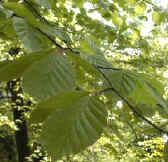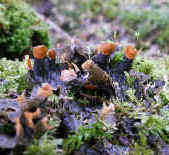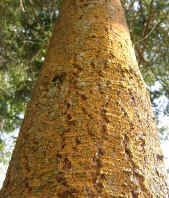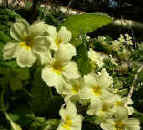What is a Woodland?

A woodland is a habitat where trees are the dominant plant form. The individual tree canopies generally overlap and interlink, often forming a more or less continuous canopy which shades the ground to varying degrees.
However, woodlands are not just trees!
Depending on the amount of light reaching the ground through the tree canopy, there will be a great variety of other plants. These will include mosses, ferns and lichens, as well as small flowering herbs, grasses and shrubs. The more different kinds of plants there are, the greater the animal diversity will be in the woodland. This will range from a variety of herbivores feeding on the different plants, to the carnivores which they provide food for. Plenty of rotting wood and decaying leaf litter offer an alternative food source for a staggering variety of invertebrates. The sheer quantity of dead organic material present means that a wealth of decomposing organisms, such as fungi and bacteria also occur in woods.
A woodland which is planted, rather than having arisen naturally, is termed a plantation. Plantations managed for timber production (forestry) are sometimes called 'forests' in common usage. In England, the term 'Forest' (capital F) refers to an area where the King/Queen has the right to keep deer and to make Forest Laws.

| Woodlands vary greatly depending on the dominant tree
species making up the wood, as well as on the spacing between individual trees. These two
factors will determine the amount of light penetrating through the main leaf canopy and
reaching the woodland floor. The more light available beneath the trees, the greater the
number of other plant species which will also be able to grow within the woodland. .
In woodlands, tree spacing is determined naturally as a result of competition between individual tree seedlings for necessities such as space, light, nutrients and water. In plantations, the spacing will be determined by how close together the trees were originally planted and whether any of the intermediate trees have been cut down (thinned). Plantations of young coniferous trees prior to thinning are often very dark places. This is because the trees are planted close together to discourage the growth of other competing plant species.
If there is sufficient light penetrating to the woodland floor, it is likely that there will also be a variety of ferns and grasses, together with wonderful carpets of herbs such as spring-flowering Bluebells, Wood Anemones, Primroses and Violets.
|
|||||||||||||||||||







